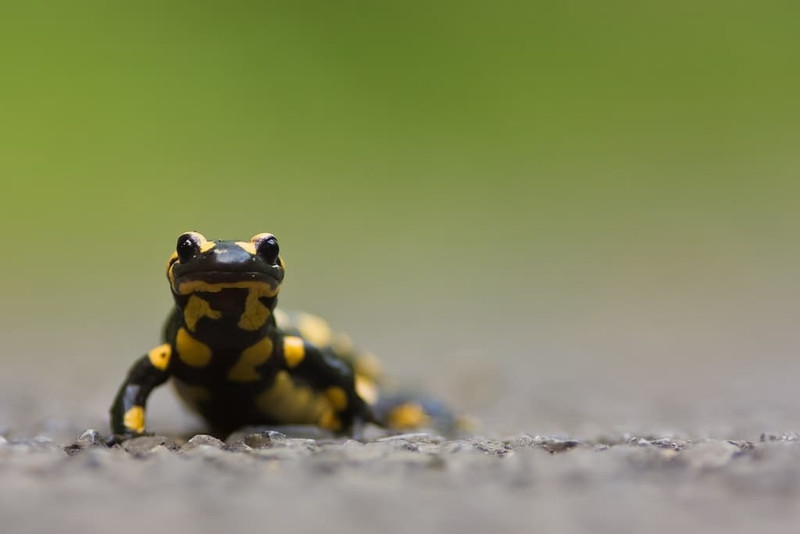
Help an Amphibian Cross the Road!
Published by Anne Altor on Mar 27th 2023
It's Spring, the time when amphibians wake up with early spring rains. You don't often see them, but the woods are home to multitudes of salamanders, toads and frogs. These cold-blooded creatures chill through the winter in leaf litter, hollow logs, under rocks, and in soil. As the snow melts and rains begin, amphibians emerge for their Rites of Spring.
Spring is prime time for woodland-dwelling amphibians. This is when they heed the call to dig out from their burrows and make their way to vernal pools and other wetlands for breeding. Many make an annual spring migration to the wetland where they were born. Spotted salamanders, wood frogs, spadefoot toads and many other species depend on these seasonal wetlands, which contain no fish. Fish are major predators of eggs and tadpoles, and some amphibians need fish-free pools in order to survive.
Life is tough for amphibians. Their woodland and wetland habitats are often destroyed by logging, 'development,' offroad vehicle use and other human interference. But they go on, as they must! And we can help them, and we must! Oftentimes, amphibians encounter roads on the way to their breeding pools. Imagine surviving to adulthood (which can take 4 or more years), and setting off on a pilgrimage to find your mate only to be squashed on the road.
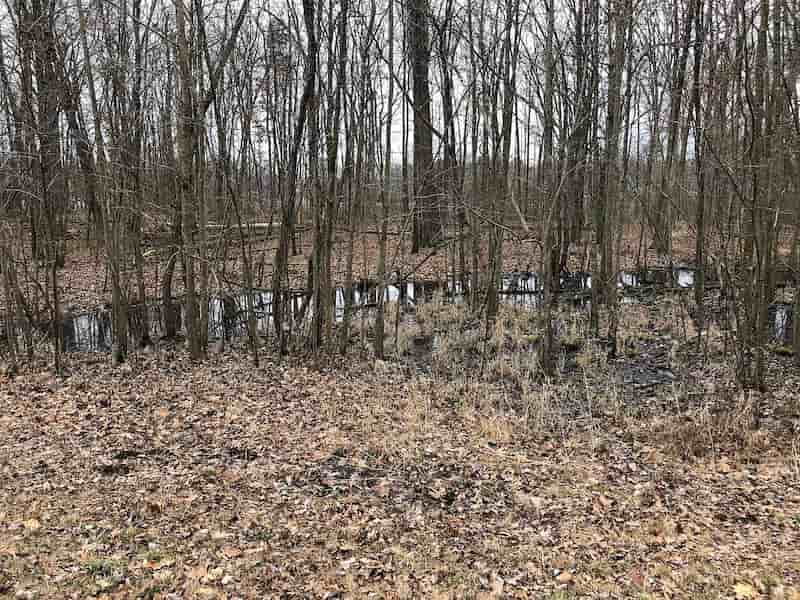
How to help an amphibian cross the road
Here's how you can help amphibians get safely to or from their breeding pools. First, pay attention! If it's after dark and raining, from late winter through early spring, keep your eyes open and drive slowly. Especially if you're on a road (even a highway) with woods nearby. These creatures are small and often hard to see. Salamanders move slowly and can take a couple of minutes to cross a road, which makes them especially vulnerable.
When you see a salamander, toad or frog in the road:
- Carefully pull over to the side of the road, scanning the roadside for more amphibians
- Put on your flashers!
- Pick the creature up gently, and move it across in the direction it's already going
- Set it down on the other side, safely off the shoulder
- Move any other amphibians you see
- Clean your hands with sanitizer
- Continue on slowly, because there are likely more!
- Stop and repeat!
Important tip: Amphibians absorb water, oxygen and chemicals through their skin. This makes them vulnerable to toxins, so it's important to have no bug spray, sunscreen, perfume or other chemicals on your hands.
The spring breeding window is relatively short. Stopping to move amphibians across the road is an important way to help these vulnerable creatures. After all, we drive our vehicles right through their homelands.
This isn't to say that amphibians aren't out and about at other times of year. Many frogs and toads (as well as reptiles like turtles) are active all summer long and into fall, and it's important to help them too!
Spring amphibians to keep an eye out for:
Below are some spring amphibians you're likely to see in the Eastern United States and Canada:
Spotted Salamander (Ambystoma maculatum)
Spotted salamanders are ~5–8 inches long, and they reach breeding age at about 4 years. They spend most of their lives in the woods under leaf litter and in burrows in the soil. Their average life span is about 20 years! An interesting fact: algae can enter the jelly-like eggs of spotted salamanders. The algae produce oxygen, which may increase the chances of the egg surviving to hatch.
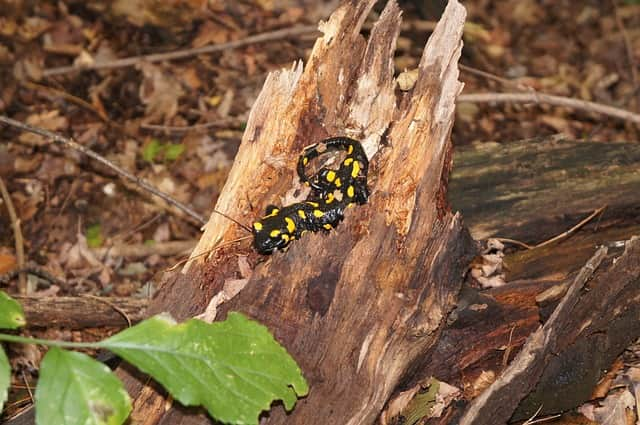
Eastern Newt (Notophthalmus viridescens)
The Eastern (or red-spotted) newt is 3–5 inches long. These forest creatures have a bright red or green spotted terrestrial stage (called a "red eft"), and an aquatic adult stage. When efts reach adulthood, they migrate to ponds to breed, and they remain mostly aquatic. Interestingly, the adults can survive on land for a time if their ponds dry up. Newts eat a variety of insects and other invertebrates, including earthworms and mosquito larvae.
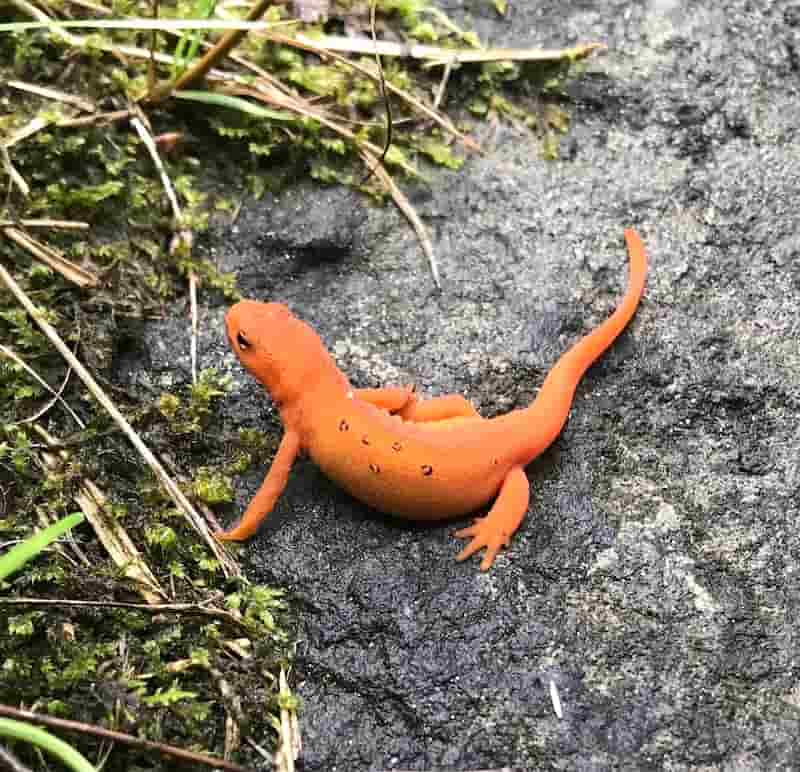
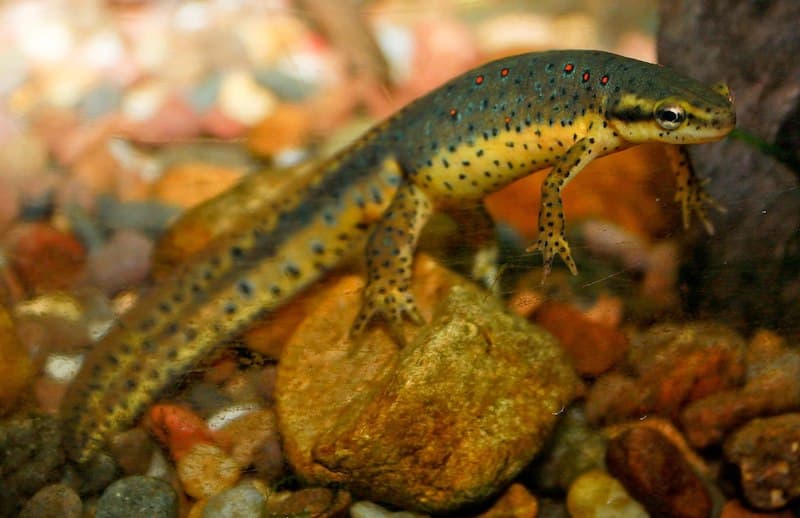
Wood Frog (Rana sylvatica)
During summer, adult wood frogs live in moist woodlands and bogs. They migrate in the fall to upland areas near vernal pools, and they spend the winter under leaves or in surface layers of soil. These amazing frogs can freeze in the winter! Wood frogs produce antifreeze that concentrates around their body organs. The exterior of the frog freezes, and the interior remains unfrozen. In early spring when the first warmish rains come, wood frogs migrate en masse to vernal pools for their breeding rituals. Wood frog tadpoles take about 2 to 4 months to mature into froglets, which emerge from the pools and disperse back into the forests.
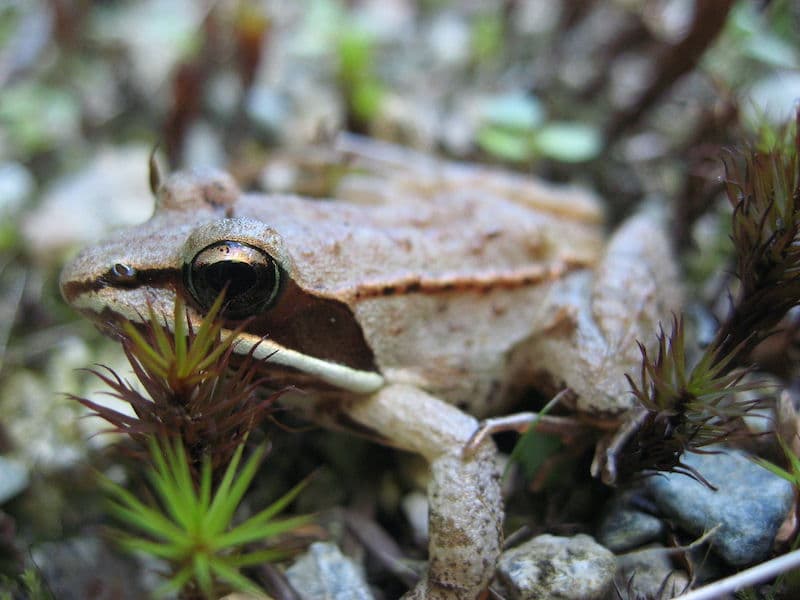
Thanks for caring about amphibians!
Once you've interacted with a salamander, frog or toad, you might become endeared to these small, fascinating creatures. They live between worlds, inhabiting upland, wetland and aquatic habitats. They bless the night with their beautiful choruses and the earth with their lives. In part because they're small and often hidden, amphibians are sometimes overlooked. But this doesn't make them unimportant. We share this earth with many other creatures who have needs as real as our own. Let's pay attention and give them a hand! Our own lives will be richer for it too.

